Making a house as attractive or stylish as possible is not the only goal of house flipping. It's about making the biggest return possible on each property -- just like real estate.
Although the rehabilitation costs of a distressed home may be covered by your fix-and-flip or bridge loan, funding is not the same as free money. One of the most important skills to have while learning how to flip a house is knowing how to use your renovation budget wisely. Performing the greatest house improvements at the lowest possible cost to optimize the home's worth should be the main goal.
Research and prepare before pulling apart a property to restore. Check local housing prices to see what buyers would pay and ROI. Therefore, check local home valuations and sales. After understanding the local real estate market, you must have home improvements. Work with a Realtor who knows your neighborhood to make wise renovation decisions.
Whether you're doing a major or minor project, these seven home improvements will increase your property's value.
Kitchens are vital for real estate investors trying to increase property value. It holds particular areas in people's hearts—a warm, inviting kitchen calls to us on some level.
Fully Renovated: Consider whether the floor plan is modern or efficient before removing all cabinets and fixtures in a complete renovation. Before buying granite or marble counters, try quartz or synthetic stones.
Specific Updates: Kitchen renovation ROI may be low. Consider darker stainless steel for a bolder design. Compare appliances with "provable" efficiency claims. A kitchen with old but serviceable cabinetry can be revived with paint.
Bathrooms show age second only to kitchens, and they always figure on lists of the most valuable home improvements.
Fully Renovated: Installing water-efficient and space-saving sinks and toilets can free up a room. Replace linoleum with sharper flooring to improve. Replacing the shower tile and tub can brighten a dull bathroom.
Specific Updates: Upgrade faucets, knobs, and other sink and bathroom fixtures. Another inexpensive upgrade that may transform a bathroom is cabinetry hardware. Home improvements can be cost-effective without a sophisticated updated floor plan or flashy installations.
Updates like new paint and flooring may seem simple, but they can increase your home value. The most significant effects are sometimes achieved with the simplest upgrades.
Fully Renovated: Some older homes have carpet and aged flooring. Wood is attractive, but you have other options. Bamboo flooring costs less and looks identical. Painting the whole house may renew it.
Specific Updates: Consider installing carpeting instead of hardwood or bamboo flooring in the upper level of your home if you conclude that new flooring is required.
It's essential to make an excellent first impression. The most valuable house upgrades are not limited to the home itself; they extend beyond the home itself.
Fully Renovated: The house's exterior ought to have a spotless appearance. It can be wise to spend money on complete landscaping, which includes lush green lawns and mulched gardens. Remove dead grass with resodding to add greenery.
Specific Updates: The entrance door can look cozy and welcoming with potted plants. Although maintained with few gardens, the backyard should be pleasant and constantly mowed. Design the front yard to draw people to the house. The backyard is just a starting place for the new homeowner to design their ideal yard.
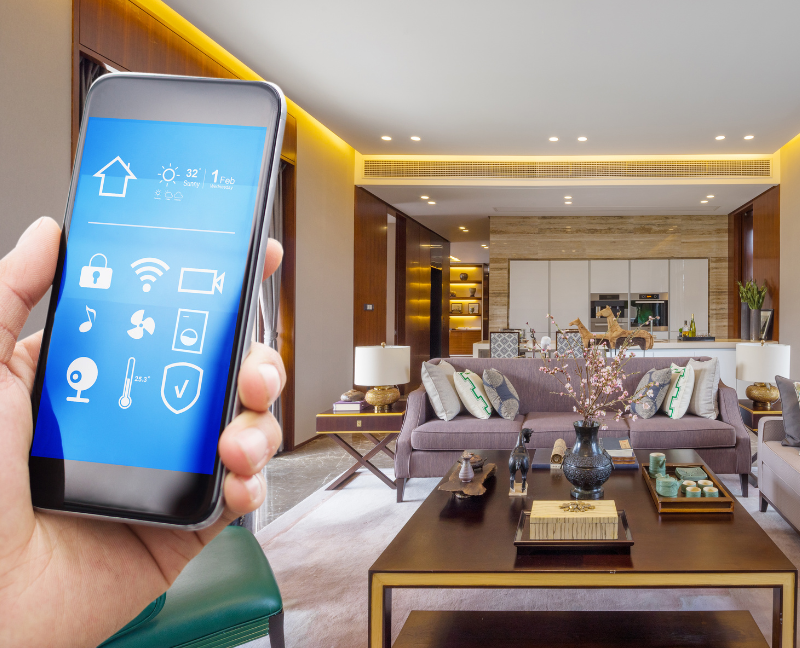
One of the simplest ways to increase the value of your home on a tight budget is to replace the lighting fixtures in your house.
Fully Renovated: An elegant look can be achieved with recessed lighting. It makes a good buzzword for selling the property. Dimmer switches, which are inexpensive and easy to install, provide elegance. Always turn off the room's breaker before touching cords.
Specific Updates: Wattage and color temperature matter when replacing bulbs. A cooler bathroom can look clean with warmer kitchen and living room colors. Your flip may sell for more with minor stylistic changes that complement the home's style and the buyer's market.
The ability to impress buyers with accurate data is a significant benefit of energy-efficient upgrades. It will show them how better your property is than others.
Fully Renovated: Renovations should begin with new insulation. Average houses lose energy from a three-foot-square hole in the wall. Updating windows can also improve energy efficiency.
Specific Updates: Use LEDS in your home or advanced technology to turn your property into a smart home. This helps promote energy efficiency, lifetime, and electricity bill savings to buyers. Start with rebates and free energy audits—there are many government-funded energy efficiency programs to boost house value on a budget.
An expansion will never be a first step when flipping a home. Additions increase livable space but rarely return on investment.
Fully Renovated: Check out surrounding homes that have added extensions before hiring an architect. You can assess the cost-to-return ratio by looking at local sales to evaluate if the extension is worth it. Knowing how an extension will influence your budget from the start is crucial.
Specific Updates: With prefabricated outbuildings, installation is cheaper than ever. Increasing living space to welcome guests, rent on Airbnb, or store products is a significant house improvement, but it's expensive. Consult your realtor to verify a check that covers more than expenses.
Conclusion
Expert house flippers and rental property investors may assess a distressed property and determine what modifications yield the highest profits and how much to flip it for. First-time flippers should engage an experienced general contractor to manage repairs, but get multiple quotations and don't overdo it.
As winter takes hold, homeowners frequently contend with escalating energy bills stemming from heightened heating requirements. Nevertheless, prioritizing winter energy efficiency doesn't necessitate compromising on comfort or enduring the chill. In reality, by taking a few strategic measures, you can maintain a warm and snug home while concurrently cutting down on energy consumption. Explore these savvy strategies that empower you to establish an energy-efficient sanctuary without bidding farewell to comfort.
Seal the Leaks:
Optimize Heating Systems:
Leverage Natural Heat:
Upgrade Insulation:
Seal and Insulate Ductwork:
Invest in Energy-Efficient Appliances:
Maintain Fireplace Efficiency:
Regularly Replace Furnace Filters:
Use Ceiling Fans Strategically:
Practice Energy-Efficient Habits:
By implementing these winter energy efficiency tips, you can enjoy a warm and comfortable home without the burden of skyrocketing energy bills. Not only will these measures contribute to cost savings, but they also align with sustainable living practices, making your home more environmentally friendly. Embrace the chill with confidence, knowing that you've taken proactive steps to make your living space energy-efficient during the winter months.
One of the most important steps in selling your home is to stage them for a virtual tour photo shoot. But how do you virtually stage a house to ensure high-quality results?
In this post, you'll find seven practical tips to achieve excellent shots.
Since virtual tours are frequently a person's first impression of a location, the property must ensure that the impression is positive by preparing ahead of time.
Not every business or property will require the same level of preparation because they are unique. Before a photographer starts taking pictures of the facility, there are a few things that all property owners should check off their checklist.
Taking virtual tours in an empty or sparsely populated area is advisable. Inform guests and tenants that certain common areas might be closed temporarily while preparing the property. You may even post signs telling people not to enter. Discuss with the residents of the apartment complex to ensure that the patios and balconies are free of obstructions.
Consider taking a picture of the property before opening if the business is a food or retail establishment. While the sun will be out, this will prevent people from appearing in your photos.
Decluttering is one of the simplest yet most important parts both in staging and selling a home.
Remove all paper, post-it notes, and other random stationery from tables, desks, and worktops. If there are any boxes, make sure they are put away and hidden—clear dry-erase boards.
It's advisable to unhook and store away any visible wires while plugged in when taking pictures. These objects may obscure the critical details you wish to get in your shots.
It should go without saying that even the tiniest dust particle or stain will be captured. After dusting everything, open a window to let some fresh air enter. Check for stains on all pillows, linens, and furniture, and replace or clean as needed.
Wipe all windows (inside and outside) to eliminate streaks, grime, and smudges. Dust blinds and push newly pulled drapes. If you have draperies or blinds, ensure they are always drawn or pulled in each room.
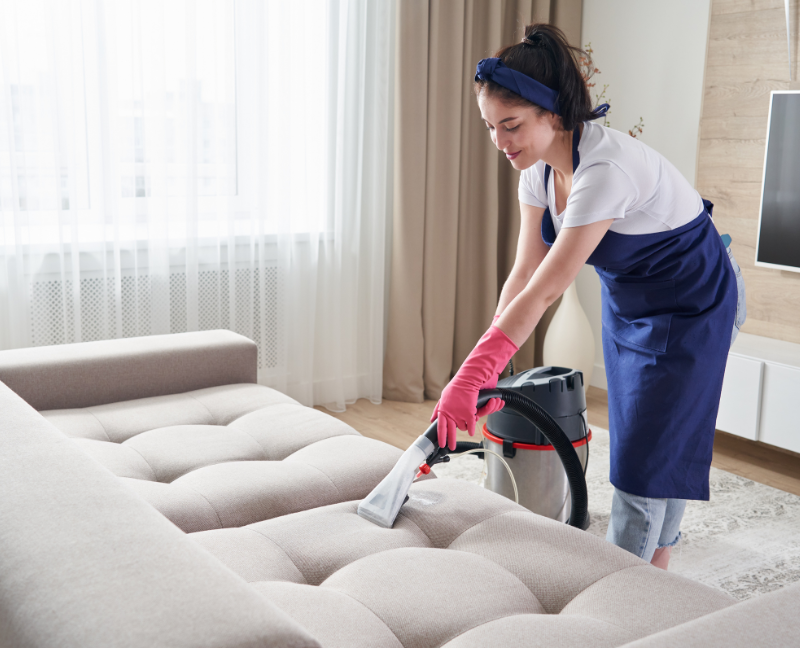
Nobody wants dull, flickering, or differently colored light bulbs. Check the proper function of each light. Turn on the interior lights for outdoor shots if you capture them in the evening.
Ensure monitors and television screens function correctly and have consistent displays if you need to turn them on. It's preferable to keep those off.
Make the decor visually appealing. Lamp shades, frames, and wall art must all be straight. Arrange the decor according to your preferences and what seems the most sense. Steer clear of seasonal decor, such as Halloween or holiday lighting. This is how your virtual tour will be dated.
One of a virtual tour's most important views is the exterior, so be sure it looks good.
From the entrance, move vehicles out of sight as well as garbage cans. Put hoses and gardening tools away as well. Make sure paths are free of debris.
If it hasn't been done recently, you should give your landscaping a makeover by replacing dead plants with fresh blooms. Additionally, remember to mow your yard freshly.
Lastly, looking into the home before the photo session can reveal things you missed during staging and planning. The best way to do this is by standing in the middle of the room and slowly checking every nook and cranny.
Look for anomalies. Go through the corridors and common spaces to review your prep checklist. What seems odd is wrong. Don't overlook anything before the shot.
These virtual tour tips provide a comprehensive guide on effectively staging a house for virtual tours. The guide ensures a visually appealing and timeless presentation by emphasizing key aspects such as decluttering, cleaning, proper lighting, decor arrangement, and outdoor grooming.
Checking everything thoroughly before the photo session underscores the importance of attention to detail in optimizing the virtual tour experience.
Knowing where to begin shopping for the ideal pair of blinds is difficult because so many alternatives are available. When thinking about how to choose blinds for your home, there are a few essential considerations you should bear in mind, and this post will show you what they are.
To help you know which blinds to choose, here are some questions to guide you:
Smaller windows are ideal for blinds due to their functionality and aesthetic appeal. Blinds suit smaller windows proportionally, making light and privacy adjustments easier. Larger windows can make installing and operating blinds difficult due to their size and weight.
Blinds on smaller windows look clean and classy due to their precision. Fitted shades give the window a modern look that matches its small size. This adds a touch of refinement and optimizes the possibilities for a well-balanced and visually acceptable window treatment option in places where more enormous alternatives may be overwhelming or impossible.
Selecting curtains or blinds is essential for maximizing the space's aesthetic appeal and practicality when designing a small living area. Curtains can provide the impression of grandeur because of their flowing design and voluminous fabric, but they can also make a small window feel claustrophobic.
On the other hand, blinds are a valuable and compact substitute that fits nicely with the limitations of smaller apartments. Their inconspicuous look is enhanced by their streamlined form and flexibility to stack or roll up neatly, which lets natural light flood the space without being overpowering.
Because of their versatility, blinds are an excellent option for small living areas since they can be used as a practical instrument for light control and an attractive window treatment that blends in with the cramped layout of small flats.
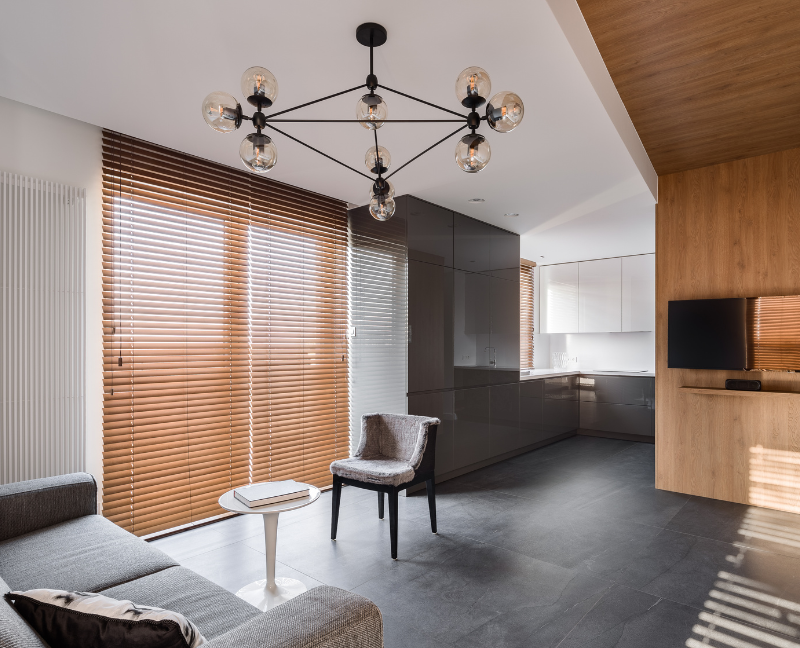
Double blinds are the most effective, as they minimize the day's glare and preserve privacy during the night hour. When the light is allowed to pass through certain types of materials, they bring forth a great deal of texture.
The presence of these elements enhances the atmosphere in the room. We provide a variety of materials that can be used to achieve the desired level of seclusion, whether with a great deal of light coming in or with no light at all. Blinds are challenging to clean, which is a disadvantage of using them.
Blinds that operate by hand and motorized are both offered by the market. Usually, the motorized ones are designed for windows that are out of reach. If you choose a manual one, test it in the store to ensure the mechanism works smoothly. When blinds are built to be no wider than four feet, they are usually easier to operate.
You can choose colors, patterns, and materials once you know exactly where, how many, and which blinds to choose will work best for you. Blinds are now available in innovative natural materials, like those made of hibiscus or banana fibers, for people who prefer earthy tones. The traditional chatthai remains a highly favored option and a valuable addition to outdoor areas.
Bottom Line
Another method for identifying colors is a "mood color board." This season's delicate colors give way to colorful ones, and floral designs are also quite fashionable. While changing your window displays' look might be costly, having blinds with a simple design, such as neutral shades, lets you easily switch up your bed linens and pillows.
In Part 1, we've given you 12 eco-friendly tips on how to make your home eco-friendly. Let's dive deeper into the helpful eco-friendly tips you may consider.
Just because the water is warm doesn't mean you can waste time in the shower. Yes, it feels good for you, but not for the environment.
Simple lifestyle modifications can reduce this vital resource's waste. A typical shower uses 5 gallons per minute. Here are ways on how to save water:
Recent eco-conscious households have switched to artificial grass to save water, air pollution, and carbon. Despite popular belief, artificial grass is environmentally friendly.
An artificial lawn can look like a lush, well-maintained lawn without the labor and cost. Water savings are one of fake grass' main environmental benefits. Watering lawns and gardens use over half of outdoor water.
Choose energy-efficient appliances when replacing them for sustainable living.
Water use, greenhouse gas emissions, and the general reliance on fossil fuels and oils may all be decreased with energy-efficient appliances like washing machines and refrigerators. The fight against climate change will benefit from all of these initiatives.
Have a garage sale or donate unused stuff and clothes instead of throwing them away.
Tip: Always use caution before discarding. Consider giving it a new home, donating it to a charity, or selling it at a yard sale, online ad, or consignment store.
It might not look like a big deal, but leaky toilets and faucets waste a lot of water. Repairing leaks promotes sustainable living.
Also, as plumbing is part of every home inspection, selling your property requires extra caution. Leaks may indicate to purchasers that you rarely maintain the home.
Paperless billing reduces the risk of losing bills and power before your movie marathon. It saves money on postage and printing and reduces paper consumption, which kills forests; thus, many billers give a discount for going paperless.
Recycling paper is essential as paper products make up over 40% of municipal solid garbage. Recycling paper uses less energy than making 'virgin' paper.
In winter, holes around doors and windows let outside air or heat escape in older homes. HVAC air escape openings in your home. This raises energy costs and carbon emissions.
Weather stripping around doors and windows reduces heating and cooling costs and improves energy efficiency. Hardware stores sell weatherstripping, which you can install in hours.
Buying a low-flow showerhead will pay off when your next water bill is much cheaper. Older shower heads produce five gallons of water per minute, which adds up quickly if numerous people shower. Water savings lessen water heater needs, saving energy.
Purchasing pre-owned items not only saves money but also helps reduce landfill waste. You may also rent instead of buying equipment, such as a leaf blower, ladder, or wheelbarrow.
So before making a big purchase, ask yourself: How often will I use this?
If you know that it's not going to be a lot of times, it makes sense to just borrow instead of buying them.
Here's the thing: living green doesn't mean settling for less; it's about choosing options that will save you and the environment you live in. After all, many used-good items are just as good as new ones.
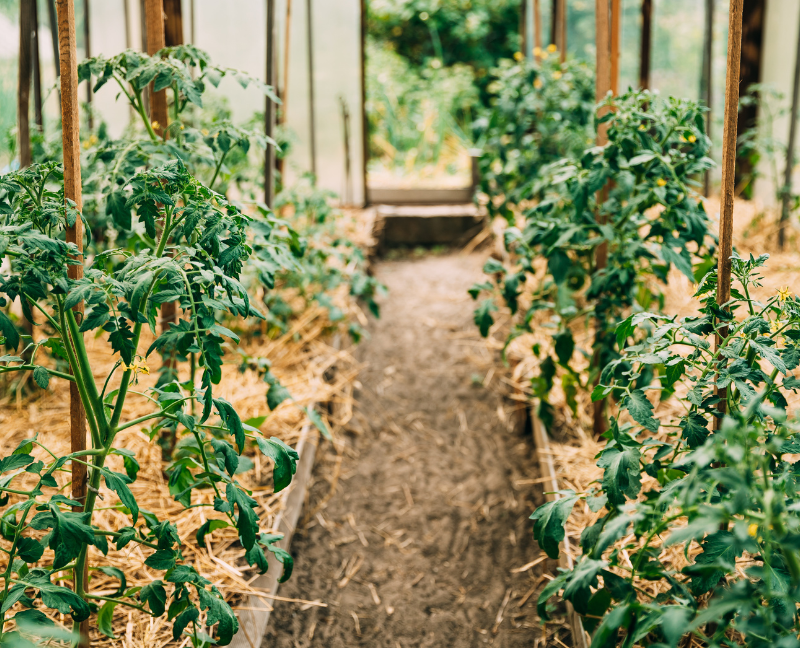
Growing your food in your backyard can enhance your eco-friendly eating habits. Cultivating your food can reduce the fossil fuels needed to import food from commercial farms and reduce food packaging waste from man-made plastics and cardboard, which travel hundreds and thousands of miles.
Graywater comes from showers, baths, sinks, and washing machines, whereas blackwater is flushed down the toilet. Greywater can be used for landscaping, watering houseplants, and flushing toilets.
Unfortunately, modern plumbing combines the two as sewage. Unless manually diverted or captured, greywater becomes black water and is unusable until municipal water treatment.
If you don't use chlorine or bleach, a greywater system can reuse washed laundry and lavatory water to water trees and other plants.
After one night of rain, 300 gallons of water can fall on your roof and pour into the street, accumulating oil, fertilizer, cigarette butts, and animal feces.
Rainwater collects in gutters, which flow into downspouts and the storage vessel. Rainwater collection can range from a rain bucket to massive cisterns that provide your residence with rainwater.
An expert can clip your gutters and direct rainfall into the barrel to create a rainwater collection system. The barrel can be connected to a hose or watering can to irrigate your plants or garden. This can help conserve water and live sustainably.
According to the EPA, the average family uses 30% of its indoor water for toilets. Ecology models can save 13,000 gallons of water annually and $90 on water costs nationwide. Bathrooms utilize roughly 30% of a typical home's indoor water.
Modern toilets use one gallon per flush, whereas older ones use six. To save money on your water bill, replace old toilets with water-efficient ones.
Do you have more tips to make a home eco-friendly? If yes, we'd love to hear them in the comments!
In the previous part, we shared some tips about home security on preparing your home for the holidays and some additional things you need to do about preparing your home for vacation.
P.S. Click this link if you want a free downloadable checklist.
Here are more tips to get your home ready for your next holiday.
Whether it's keeping your home tidy or taking care of your appliances, here are some tips you can consider before going on a holiday vacation.
Keep your home clean and well-organized by following these tips:
Clear your fridge of expired food before your vacation to avoid a rotting smell. Give your neighbor food to avoid wasting it. Limit yourself to home-cooked meals the week before your vacation to use up all your groceries.
Clearing the garbage disposal before vacation will prevent odors. While running the disposal, add citrus peels for aroma.
Leaving your trash and recyclables in your home while on vacation can attract pests and rats. Toss and recycle in bathroom, kitchen, and garage containers. Request a neighbor to bring your empty receptacles to the curb and inside if you travel before pick-up day.
While on vacation, unclean dishes or silverware in the dishwasher may attract bugs or rodents. To arrive home to clean dishes, run and unload the dishwasher.
Do not leave wet clothes in your washing machine when traveling; otherwise, they will deteriorate. After washing it, you don't want to mildew your ugly holiday sweater.
Check the garage for pests and tiny rodents. If you detect any, over-the-counter medicines and insecticides may help. A pest control firm may help keep unwelcome "guests" out while you're on vacation.
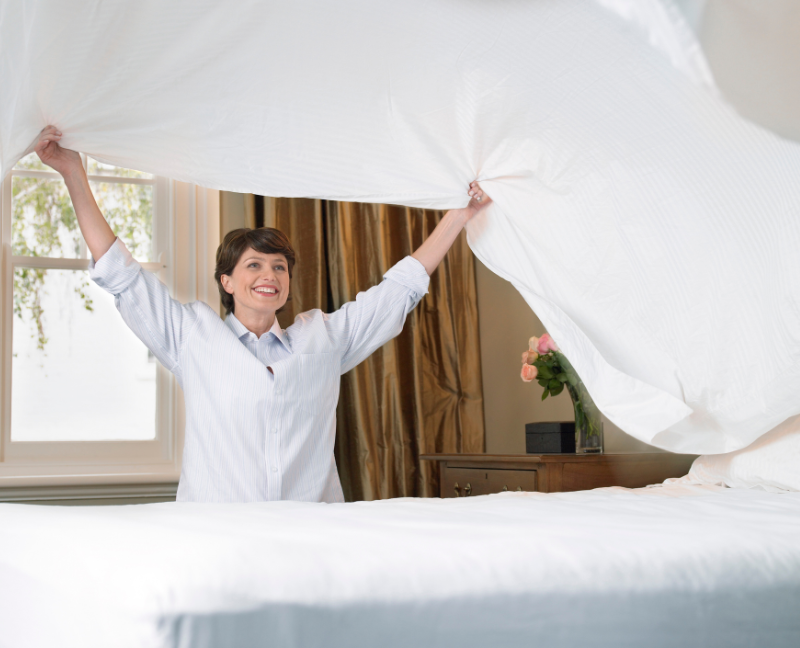
Spend time washing and drying used bedding. After a long day of travel, you'll appreciate a clean bed and new sheets. This will also prevent bacteria growth.
Wet bath towels can cause mold and mildew in your bathroom: machine-wash and dry old towels.
Washing and drying dirty garments will reduce your chores after vacation. Also, this will keep bacteria from forming on sweaty clothes and let you come home to a complete wardrobe.
You want to avoid untidy floors and carpets when you return from vacation. Vacuuming carpets and sweeping floors before the holiday will keep your home clean and look fantastic when you return.
Remove food crumbs and clutter from countertops to deter insects. For a fresh scent and welcome kitchen when you get home.
These wet locations might grow mildew. Clean these places thoroughly before your winter holiday to return to a clean and welcoming bathroom.
Reduce the risk of damaging your appliances and energy use while you're away.
Unplugging electronics saves money and protects your home from power surges and fires.
To avoid wasted energy and power surge damage, unplug your toaster, coffee maker, blender, etc.
Adjust your thermostat to 55–60 degrees Fahrenheit in cooler months to rest your heating system instead of turning it off and freezing your pipes. You can check your home's temperature while abroad with a smart thermostat. You can adjust the thermostat remotely using a smartphone app in extreme cold.
Check each area and ensure all faucet handles are closed before leaving so water doesn't drip for days or weeks.
Your water heater can rest while you prepare for winter vacation. Reduce the unit's temperature to minimize utility expenditures. Gas heaters can be manually lowered. Try checking your electric water heater for vacation settings that lower water temperature.
Before going for a long winter vacation or a holiday visit to family, turn off your main water supply line. While you're away, the water stays at full pressure in pipes, so if one bursts, water will flow until it's turned off. That said, shut down the water supply pipe to avoid a flooded basement or pool in the living room.
Smart smoke detectors are useful in sending notifications while you're away. Make sure that they are working well by testing your smoke alarm batteries and system.
When is your next holiday vacation? How do you make sure that your home's safe when you get away? Feel free to share your tips in the comment section.
Winter holidays are the most popular period of the year to travel mainly because of its perks, such as lower prices, fewer crowds, and authentic experiences. However, an exciting trip might get ruined once you realize you forgot to lock a door or turn on the faucet in your rush to catch a flight.
Therefore, before you plan your next trip, learning tips on how to get your home ready for the holiday can help you enjoy a well-deserved break.
P.S. Click this link if you want a free downloadable checklist.
Below are easy yet helpful tips on how to prepare your home security, appliances, and housekeeping before a holiday vacation.
Before a weeklong vacation, prune your yard and shrubbery. Hiring a local lawn care provider regularly or bi-weekly may be ideal for long holidays.
Before vacationing in snowy places, clear or shovel your driveway. A snowy driveway without footsteps or tire marks may suggest no one is home. Expecting snow? A snow removal service may visit your property while on vacation to make sure that your driveway is clear.
Make a trip around your house to close and lock all windows and side and back entrances. Check pet doors for coverage and locking. As you leave, lock the front door.
Inform any neighbors remaining home for the holidays of your intentions and guests. They can phone authorities or warn you in an emergency or suspicious situation. They may also help with house-sitting chores like watering plants, collecting mail, and emptying garbage.
Close your blinds to make it hard for an unwanted guest to tell if your home is occupied. When planning a winter vacation, this can insulate your windows from the cold, reducing your heater’s workload.
Schedule outside lighting to highlight doorways and gloomy places around your property. This makes your house appear occupied and helps neighbors identify strange behavior outside. Motion-activated lighting lets you utilize it when needed instead of running the lights.
Leave a few modest lights on during your vacation to provide the impression of being home. Want to reduce electric consumption? Automation with digital timers would be more efficient and effective.
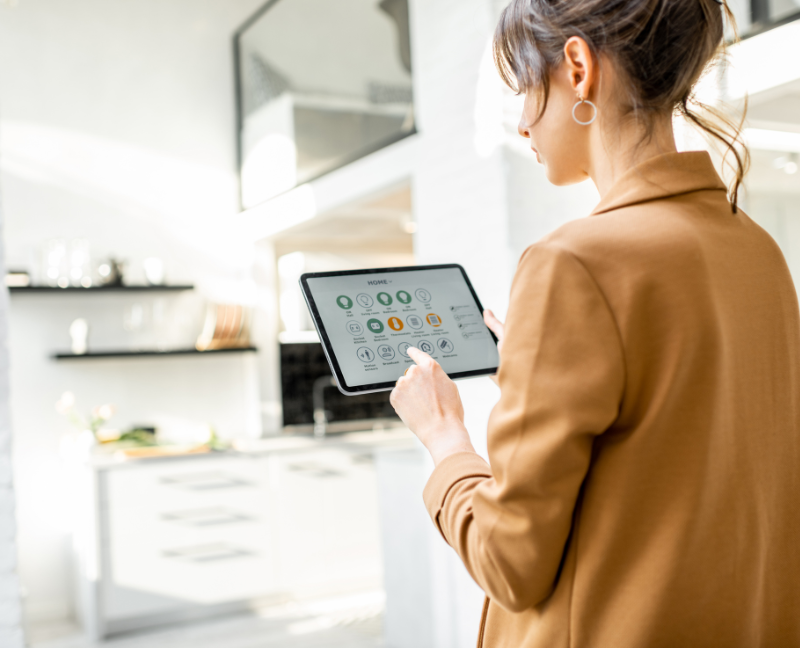
Arm your alarm before vacationing. Tell your provider about your travel plans and whether someone will be at your residence while you're away.
Ensure your doorbell camera works and shows anyone at your front entrance clearly. When you're away, a doorbell camera can protect your packages.
The welcome mat, door frame, potted plant, and other frequent areas to seek for spare keys are known by most individuals. Please offer your extra key to a house sitter, friend, or neighbor in case of need.
Junk mail and newspapers might accumulate while you're away, indicating an unattended home. Putting your mail and newspaper on hold is simple.
Automating your home takes two to three weeks, so prepare beforehand. Hiring a local home automation business may be worth it if you take an extended vacation or travel often. Smart home technology lets you control and monitor home security and appliance usage from your smart device.
Along with your primary home security, here are a few additional things you can do to make your home vacation-ready:
Before leaving, water indoor house plants, depending on the type and length of your trip. Have a friend, neighbor, or home sitter care for sensitive plants or longer getaways as needed.
We recommend leaving your pet with a friend or neighbor while on vacation if it needs daily food, walks, or medicine. You might also board them at a veterinary or pet-sitting service.
If you've taken all the required steps, hide your possessions upon departing. Keep valuables in a safe while on vacation. A well-decorated basement may need relocating valuables upstairs to prevent floods.
You won't have much hearty food left after wasting perishable stuff. If grocery stores and restaurants are closed, you'll be pleased to defrost a tasty lunch after your travels.
These are just some tips to help prepare your home for the holidays. Watch out for Tips For Getting Your Home Ready For The Holidays [Part 2] to learn more.
Living an environmentally-friendly lifestyle is sometimes misunderstood, mainly because it's costly, inconvenient, and demanding.
But in reality, choosing to live in a sustainable way is relatively simple; all it takes is one slight adjustment at a time to make a big difference. In this post, we’ll share some eco-friendly tips to help you get started.
The average home uses 9% of its energy on lighting.
Now, if you want to lower your energy bill and environmental impact from all your light bulbs, using LED bulbs is a cheap and easy alternative. It also provides high-quality light output and emits less heat, unlike standard bulbs, which might make your air conditioner work harder.
LED bulbs have also evolved to fit recessed lighting and dimming controls.
Not only are plastic water bottles uneconomical, but it's also harmful to the environment. Plastic production requires three times the water in a water bottle to make one, yet 80 percent aren't recycled.
So instead of constantly buying a plastic bottle, get a reusable, portable water bottle.
Not only will you save money by reusing a water bottle, but there will also be fewer plastic bottles needed.
The good thing about having recycle bins is that it makes you more aware of recycling glass bottles, jars, paper, and other objects. To simplify recycling and composting, have trash and recycling bins in more than just the kitchen.
Meanwhile, a compost bin will let you eliminate leftovers and give your plants free fertilizer.
Tip: Make sure that the compost bin has a tight cover and a secure hatch at the bottom for extracting fertilizer when ready to use to avoid pests.
Reducing meat consumption can create a significant impact on the environment as it helps reduce GWP emissions.
In case you didn't know, more than 30 percent of the Earth’s surface is being used to raise and support livestock.
“The livestock sector accounts for 9 percent of CO2 deriving from human-related activities but produces a much larger share of even more harmful greenhouse gasses. It generates 65 percent of human-related nitrous oxide, which has 296 times the Global Warming Potential (GWP) of CO2," according to research by the United Nations.
Other than the GWP gas emission, consuming fewer farm animals means having more land to use for recreation.
So instead of having meat-only meals, consider consuming more vegetables and seafood.
Choosing to live in an eco-friendly home setup doesn't mean leaving paper towels for good. It's about using old shirts or fabric for cleaning or drying instead of buying a dozen paper towels.
Regular toilet paper is not eco-friendly because everyone uses 100 rolls yearly.
If you want to switch to an eco-living lifestyle, you should use bamboo toilet paper for the sake of environmental sustainability since there are bamboo species that grow 36 inches in 24 hours.
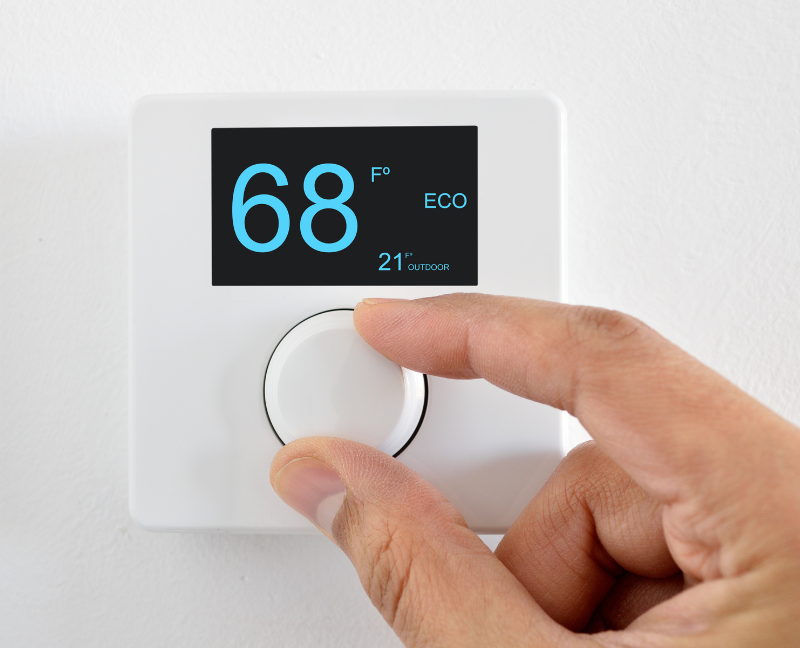
Monitor and control your HVAC systems with a programmable thermostat. Smart thermostats lower utility bills and make homes greener. It also saves energy, which, for some, is the main reason to upgrade.
A smart thermostat lets you arrange your HVAC to operate less while you're away, saving you energy by cooling your home just when you're home.
You can set your digital thermostat to turn on right before family members arrive to cool your home to 72 degrees from the minute you enter. Nest claims 15 percent cooling savings and 10–12 percent heating savings.
Turning them off while leaving a room, especially when leaving the house, saves energy and money. However, the electricity saved by turning the electric lights off depends on the bulbs used.
For instance, incandescent bulbs are energy-inefficient. Before producing light, these lights convert electricity into heat. It provides 90% heat and 10% light. Thus, turning off incandescent light bulbs saves energy at home.
So if you leave your house for over 15 minutes, be sure to switch them off to save electricity. The method also extends CFL bulb life.
Meanwhile, LED bulbs won't be affected by turning them on or off.
One of LED lamps' key features makes them perfect for residential energy conservation. They can also be turned on and off automatically and brightened instantaneously with sensors.
Energy Star estimates that washing machines consume 90% of their energy to heat water. Washing with cold water can reduce carbon dioxide emissions by 1,600 pounds annually.
Instead of heating, run your washing machine on cold. Not only does this cut carbon dioxide emissions, but it also preserves your garments, as hot water can fade colored clothes.
Unless you have oil stains, there's no use in washing on hot. You can try warm water if cold doesn't work. Still better than hot water; it cleans better than cold water.
The EPA found that dryers use more energy than refrigerators, washers, and dishwashers, and line drying can cut primary appliance energy use by one-third.
Fresh-air line-drying is remarkable. Also, drying clothes and bedding on a rack outside instead of in the dryer will prolong their life. Establishing a drying rack on your balcony and opening the windows will let the sun dry your clothing faster if you don't have a garden or backyard.
Home cleaning supplies contain the most potent bacteria-killers. These products are designed to kill almost all organisms. Man-made poisons harm the ecosystem and kill animals and plants once they enter our waterways via sewers, and these are just some of the reasons why opting for natural cleaning ingredients is a must.
Using organic cleaning products might be a better option but it can be costly. What you can do instead is to use DIY cleaning products made with vinegar, baking soda, and lemon juice. Not only is this eco-friendly, but it also helps reduce packaging waste and household chemical pollution.
Canvas bags replace inefficient plastic and paper bags at most stores. Although canvas bags are inexpensive, they are convenient. Canvas bags are more robust, hold more than plastic or paper bags, and help store and transfer objects.
Even if you don't use canvas bags, reusing plastic bags benefits the environment. Put plastic bags in tiny trash cans around the house or recycle them. Every little bit helps.
These are just some ways to make your home eco-friendly. Watch out for Part 2 to learn more tips.
In today's world, energy efficiency is not just a buzzword; it's a smart way to save money, reduce your environmental impact, and make your home more comfortable. Whether you're looking to lower your utility bills, reduce your carbon footprint, or enhance your home's value, creating an energy-efficient home is the way to go. Today, let’s explore a range of tips and strategies to help you achieve an energy-efficient home.
Before delving into practical tips, let's take a moment to understand why energy efficiency is crucial:
Lower Utility Bills: An energy-efficient home consumes less energy for heating, cooling, and electricity, resulting in substantial cost savings.
Reduced Environmental Impact: Lower energy consumption translates to reduced greenhouse gas emissions, helping combat climate change and protect the environment.
Enhanced Comfort: An energy-efficient home is a more comfortable home. Proper insulation, sealed gaps, and efficient heating and cooling systems provide consistent indoor temperatures.
Extended Equipment Lifespan: Energy-efficient appliances and systems experience less wear and tear, leading to longer lifespans and fewer replacements.
Increased Home Value: Energy-efficient features can make your home more appealing to potential buyers, potentially increasing its resale value.
Now, let's dive into the practical steps to make your home more energy-efficient.
Start by identifying areas of improvement. Hire a professional or conduct a DIY energy audit to pinpoint where your home is losing energy. Common culprits include inadequate insulation, drafty doors and windows, and outdated appliances.
Proper insulation is key to maintaining a comfortable temperature indoors. Consider adding or upgrading insulation in your walls, attic, and floors. It's a one-time investment that yields long-term savings.
Gaps and cracks in doors, windows, and walls can lead to energy waste. Seal these areas with weatherstripping or caulk to prevent heat loss and drafts.
When it's time to replace appliances, choose ENERGY STAR-rated models. These appliances are designed to use less energy while providing the same level of performance.
Replace incandescent bulbs with energy-efficient LED bulbs. They last longer and use significantly less energy, reducing your lighting costs.
A smart thermostat allows you to control your home's temperature remotely and program it to reduce heating or cooling when you're not at home, further reducing energy consumption.
Consider installing solar panels on your roof. They can significantly reduce your reliance on grid electricity, leading to substantial savings over time.
Double-paned or triple-paned windows offer better insulation, preventing heat loss in the winter and heat gain in the summer.
Install low-flow faucets and showerheads and consider a tankless water heater to reduce your hot water consumption.
Simple changes like turning off lights when not in use, unplugging electronics, and maintaining your HVAC system can also contribute to energy efficiency.
Creating an energy-efficient home is a wise investment that pays off in numerous ways. Lower utility bills, a reduced environmental footprint, improved comfort, and increased home value are just a few of the benefits. By implementing these practical tips and strategies, you can transform your home into an energy-efficient oasis, all while contributing to a more sustainable and eco-friendly future.
A home is more than just a place to live; it's your personal sanctuary. It's where you seek comfort, relaxation, and refuge from the outside world. While the concept of coziness is subjective, there are certain built-in features that can universally contribute to a warm and inviting atmosphere. In this post, we'll explore some key elements that can transform your space into the ultimate haven.

Fireplace
Few features can match the charm and warmth of a built-in fireplace. Whether you opt for a traditional wood-burning hearth or a modern gas variant, a fireplace can be the centerpiece of your cozy living space. Its crackling flames and radiant heat make it a focal point for gatherings and a source of comfort on chilly nights.
Exposed Wooden Beams
Exposed wooden beams on ceilings or walls can infuse your home with a rustic and inviting ambiance. These architectural elements add character, making your space feel more grounded and cozy.
Built-In Shelving
Custom-built shelves or bookcases are not only practical but also contribute to the overall coziness of your home. Display your cherished books, collectibles, or family photos, turning these built-in shelves into a reflection of your personality.
Tranquil Window Seat
Imagine having a peaceful corner with a view and natural light where you can curl up with a good book. A built-in window seat offers just that. It's a tranquil nook that allows you to enjoy the outdoors from the comfort of your home.
Bay Windows
Bay windows provide a perfect spot for a cozy seating area or a charming dining nook. The additional space and the natural light they bring can make any room feel warmer and more inviting.
 Crown Molding
Crown Molding
Elegant crown molding adds a touch of timeless beauty to your home. It creates a sense of refinement and coziness that can transform any room.
Wainscoting
Wainscoting on your walls can introduce a sense of traditional warmth and style. It adds texture and character to your living spaces, making them feel more inviting.
Built-In Blinds
Built-in blinds or window treatments offer not only privacy and light control but also a polished and cozy look. They seamlessly blend with the architecture of your home.
Hidden Storage Solutions
Built-in storage solutions are more than just practical; they keep your space clutter-free and organized. Whether it's under-stair storage, hidden closets, or built-in cabinets, these features add convenience and a tidy, inviting environment.
Custom-Built Kitchen Island
A custom-built kitchen island can be the heart of your home, providing a central gathering place, additional counter space, and storage. It adds functionality and style to your kitchen, making it a cozy hub for cooking and socializing.
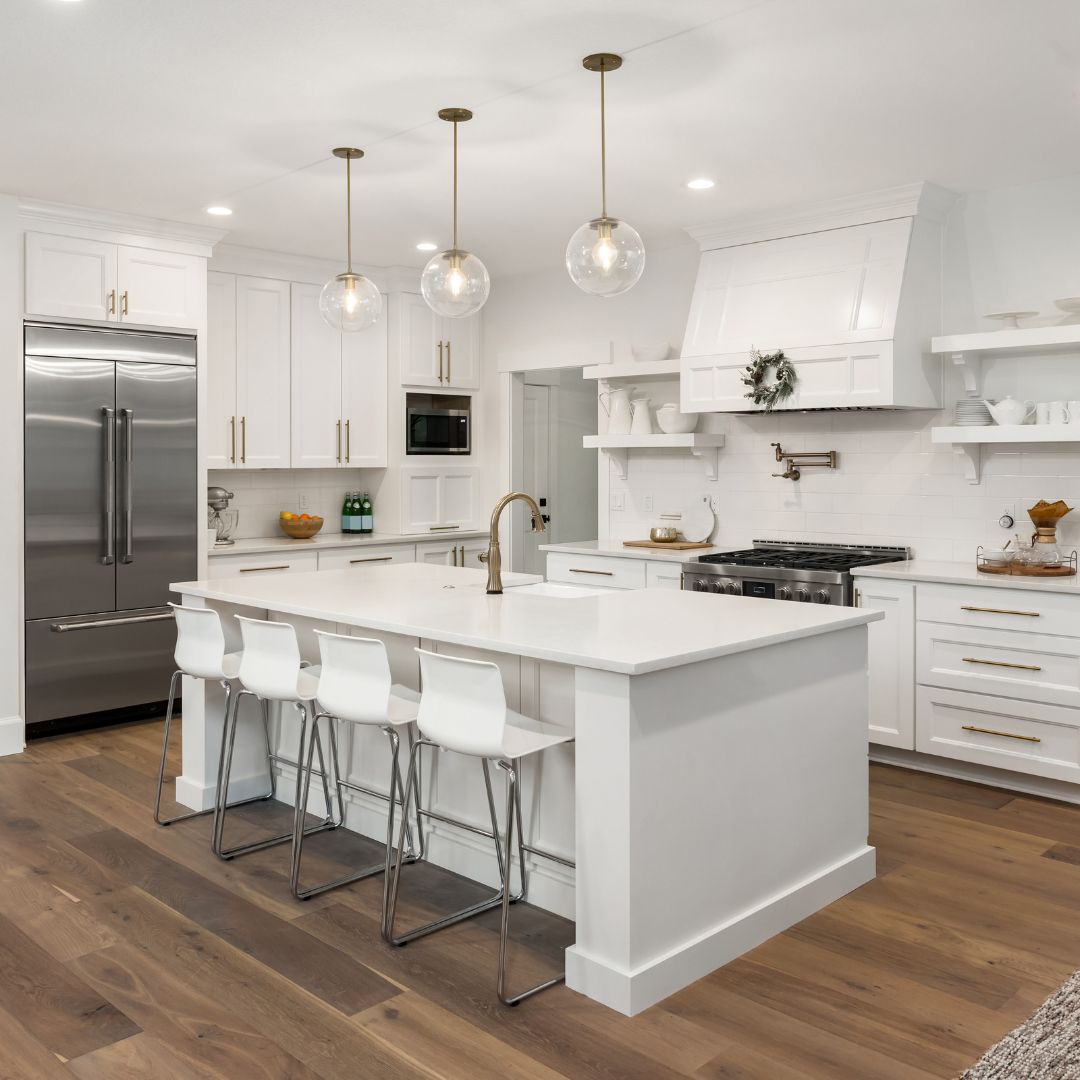
Incorporating these built-in features into your home can have a transformative effect, creating an environment that is both stylish and welcoming. Your living space will become more than just a house; it will be a true sanctuary of comfort and coziness.
Enjoyed this content? You might also find these articles worth your time:

8313 W. 10th St
Indianapolis IN 46234
dennis@indyhomepros.com
317-316-8224